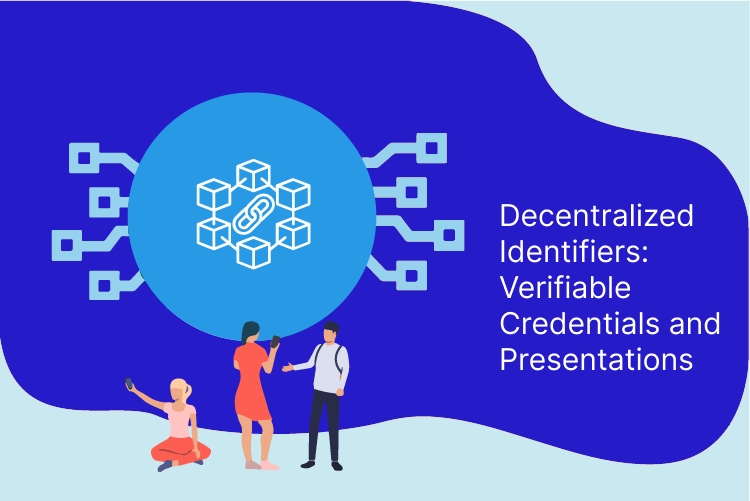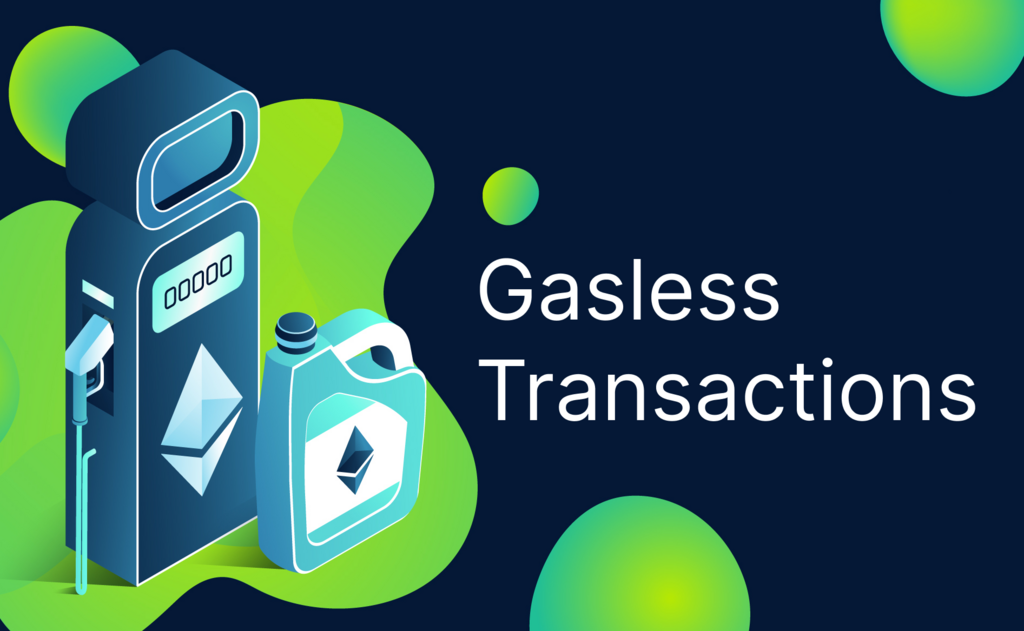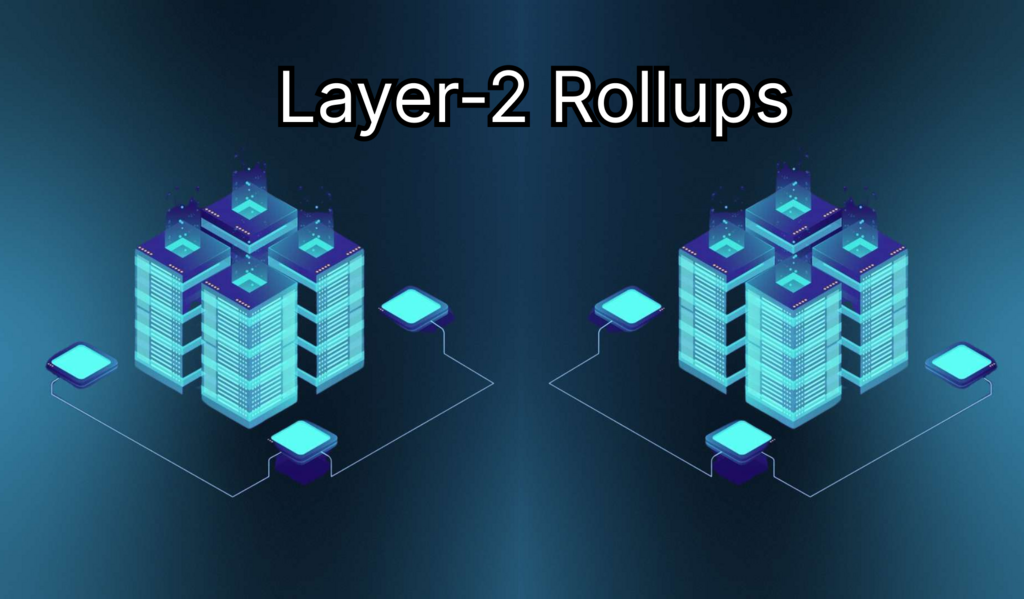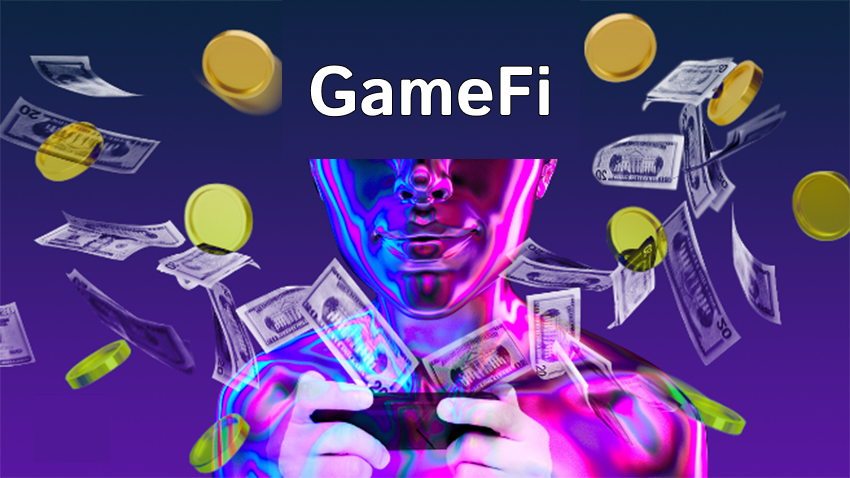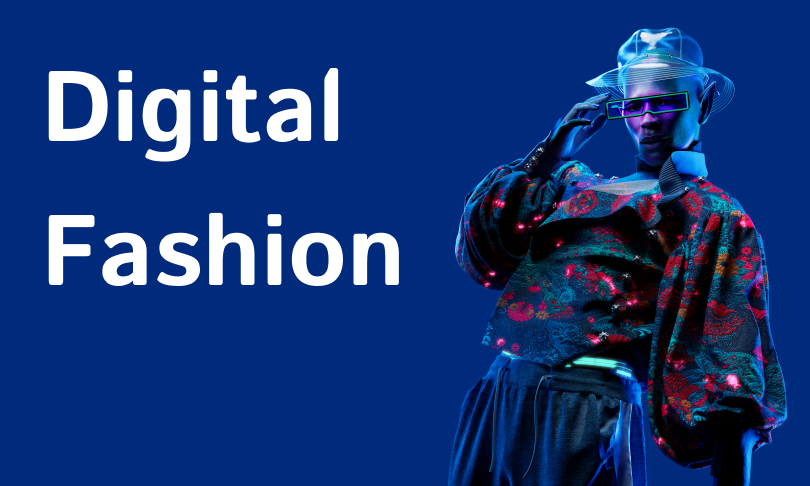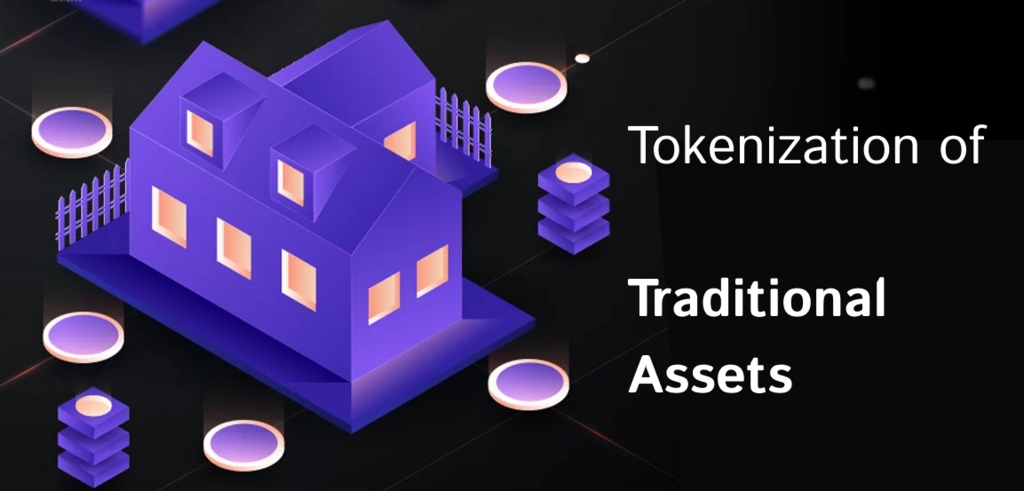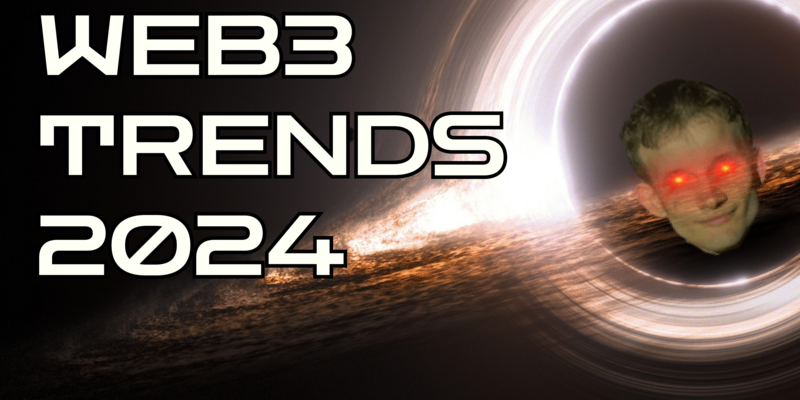
6 Key Trends in Web3 (July 2024)
The state of Web3 in 2025 is marked by significant advancements and challenges, indicating both maturity and ongoing evolution in of the web3 space. Here are 6 key trends in web3 in 2024:
Decentralized Identifiers and Verifiable Credentials
The adoption of Decentralized Identifiers (DIDs) and Verifiable Credentials (VCs) is crucial for digital trust and interoperability across enterprises. These technologies are helping to create a more secure and user-driven digital ecosystem, with successful pilots demonstrating their potential for wide-scale adoption. Examples real projects of Decentralized Identifiers and Verifiable Credentials in Web3:
Sovrin Network
- Project Overview: Sovrin is a global public utility for self-sovereign identity. It uses DIDs and VCs to enable individuals to own and control their digital identities.
- Applications: Sovrin is used for various identity verification purposes, including secure login, digital ID verification, and KYC (Know Your Customer) processes.
- Key Features: Provides a decentralized and secure way to verify identities without relying on central authorities.
Evernym
- Project Overview: Evernym is a leader in the development of self-sovereign identity solutions. They provide tools and platforms to create and manage DIDs and VCs.
- Applications: Their technology is used in healthcare, finance, and travel industries for identity verification, secure document sharing, and access control.
- Key Features: Enables users to share only the necessary information, protecting privacy and enhancing security.
IBM Verify Credentials
- Project Overview: IBM's digital credential platform uses DIDs and VCs to create verifiable digital identities.
- Applications: Used in enterprise environments for employee credentialing, supply chain verification, and customer identity management.
- Key Features: Supports interoperability and integration with existing systems, providing a seamless user experience.
Microsoft ION
- Project Overview: ION is a decentralized identifier network developed by Microsoft on the Bitcoin blockchain.
- Applications: Provides a way to create, manage, and use DIDs for various digital interactions, including authentication and secure communications.
- Key Features: Scalable and interoperable, supporting millions of DID operations per day.
uPort
- Project Overview: uPort is a platform for managing digital identities using DIDs and VCs.
- Applications: Enables users to register digital identities, manage credentials, and interact securely with services.
- Key Features: Focuses on user privacy and control, with implementations in digital identity and access management.
Kiva Protocol
- Project Overview: Developed by Kiva, this protocol uses DIDs and VCs to provide secure and verifiable identity solutions.
- Applications: Mainly focused on financial inclusion, enabling individuals without traditional ID documents to access financial services.
- Key Features: Helps to verify identities for microloans and financial services, particularly in developing countries.
Gasless Transactions
There is a growing prevalence of gasless transactions, making it easier for users to interact with blockchain applications without the complexity of transaction fees. Here are examples of real projects:
Biconomy
- Project Overview: Biconomy provides a relayer infrastructure that enables gasless transactions, allowing developers to build applications that abstract gas fees from end-users.
- Applications: Used in decentralized applications (dApps) for seamless user experiences where users do not need to handle Ethereum gas fees directly.
- Key Features: Supports meta-transactions, allowing dApps to pay for gas fees on behalf of users. This significantly improves user onboarding and engagement.
- Sources: Biconomy Documentation, CoinDesk Article
OpenZeppelin Defender
- Project Overview: OpenZeppelin Defender provides a comprehensive suite of security tools for smart contract management, including gasless transactions through meta-transactions.
- Applications: Utilized by dApps to enhance security and usability by handling gas fees and simplifying transaction processes for end-users.
- Key Features: Offers a relayer service to facilitate gasless transactions and tools for monitoring and securing smart contracts.
- Sources: OpenZeppelin Blog
Gnosis Safe
- Project Overview: Gnosis Safe is a multi-signature wallet that supports gasless transactions through integration with meta-transaction relayers.
- Applications: Primarily used by organizations and DAOs for secure management of digital assets without users needing to manage gas fees.
- Key Features: Allows batch transactions and interaction with DeFi protocols without direct gas payment from end-users.
- Sources: Gnosis Safe Documentation
Layer-2 Rollups
Layer-2 solutions and rollups are significantly increasing transaction throughput, expected to surpass Layer-1 transaction volumes by the end of the year. Examples:
Arbitrum
- Project Overview: Arbitrum is a Layer-2 scaling solution for Ethereum, using optimistic rollups to increase transaction throughput and reduce costs.
- Applications: Supports various dApps and DeFi protocols like Uniswap, Aave, and others to offer faster and cheaper transactions.
- Key Features: Provides significant improvements in speed and cost-efficiency while maintaining the security of Ethereum.
- Sources: Arbitrum Official Website, Ethereum.org Overview
Optimism
- Project Overview: Optimism is another Layer-2 solution leveraging optimistic rollups to scale Ethereum by offloading computation and state storage from the main chain.
- Applications: Used by major dApps such as Synthetix, Uniswap, and other DeFi applications to offer enhanced performance.
- Key Features: Enables cheaper and faster transactions while being fully compatible with existing Ethereum dApps.
- Sources: Optimism Documentation.
Polygon (formerly Matic)
- Project Overview: Polygon provides a multi-chain scaling framework for Ethereum, including a variety of solutions such as Plasma chains, zk-Rollups, and optimistic rollups.
- Applications: Used extensively across the DeFi ecosystem, including platforms like Aavegotchi, Decentraland, and SushiSwap.
- Key Features: Offers a versatile suite of scaling solutions to cater to different needs, enhancing the flexibility and scalability of Ethereum dApps.
- Sources: Polygon Technology.
GameFi
The intersection of gaming and finance (GameFi) continues to grow, offering new revenue models and immersive experiences for gamers. Examples of GamiFi projects in Web3:
Axie Infinity
- Project Overview: Axie Infinity is a popular blockchain-based game where players breed, raise, battle, and trade fantasy creatures called Axies.
- Applications: Players earn tokens (SLP and AXS) by participating in battles and completing tasks. These tokens can be traded or used within the game's ecosystem.
- Key Features: Combines elements of traditional gaming with blockchain technology, allowing players to own their in-game assets as NFTs.
- Sources: Axie Infinity Official Website, Coindesk Article
Decentraland
- Project Overview: Decentraland is a virtual reality platform powered by the Ethereum blockchain, where users can create, experience, and monetize content and applications.
- Applications: Players can purchase virtual land (LAND), build structures, host events, and create experiences, with transactions conducted using the MANA token.
- Key Features: Offers a decentralized virtual world where users have full ownership of their creations and assets.
- Sources: Decentraland Official Website
The Sandbox
- Project Overview: The Sandbox is a virtual world where players can build, own, and monetize their gaming experiences using NFTs and the SAND token.
- Applications: Users can create voxel assets and game experiences, trade digital assets, and participate in community-driven governance.
- Key Features: Integrates blockchain technology with a robust gaming ecosystem, allowing users to truly own their in-game assets.
- Sources: The Sandbox Official Website, Decrypt Article
Illuvium
- Project Overview: Illuvium is an open-world RPG adventure game built on the Ethereum blockchain, where players collect and battle creatures called Illuvials.
- Applications: Players earn rewards through gameplay, which can be traded or sold in the Illuvium marketplace.
- Key Features: Combines a captivating gaming experience with blockchain-based ownership and economic incentives.
- Sources: Illuvium Official Website.
Gods Unchained
- Project Overview: Gods Unchained is a free-to-play, play-to-earn trading card game where players own their cards as NFTs.
- Applications: Players earn rewards by competing in card battles and can trade their cards in the marketplace.
- Key Features: Emphasizes strategic gameplay and true ownership of in-game assets.
- Sources: Gods Unchained Official Website, CryptoSlate Article
Digital Fashion
Digital fashion is becoming more accessible, allowing independent designers to bypass traditional industry gatekeepers. Examples of digital fashion projects in web3:
The Fabricant
- Project Overview: The Fabricant is a pioneering digital fashion house that creates digital-only clothing. They collaborate with traditional fashion brands and artists to produce unique digital garments that exist solely in the digital realm.
- Applications: The Fabricant’s digital outfits can be used for social media avatars, virtual environments, and augmented reality experiences. They’ve collaborated with brands like Adidas and Puma.
- Key Features: Emphasizes sustainability by eliminating physical production, while leveraging NFTs to provide ownership and authenticity.
- Sources: The Fabricant Official Website.
DressX
- Project Overview: DressX is a digital fashion retailer that allows users to buy and wear digital clothing in virtual environments and on social media.
- Applications: Users can upload their photos and "wear" digital clothes, which DressX’s technology seamlessly integrates into the images. These digital outfits can also be used in metaverse platforms.
- Key Features: Provides a vast collection of digital clothes, promoting a sustainable alternative to fast fashion and supporting designers through blockchain-enabled authenticity and royalties.
- Sources: DressX Official Website.
Rarible
- Project Overview: Rarible is a decentralized marketplace for NFTs where digital fashion is a growing category. Artists and designers can mint and sell their digital clothing as NFTs on this platform.
- Applications: Allows digital fashion creators to sell unique pieces directly to consumers. Buyers can use these digital garments in virtual worlds or display them in digital galleries.
- Key Features: Supports creators with tools to mint, showcase, and monetize their digital fashion items, leveraging the decentralized nature of blockchain for transparent transactions.
- Sources: Rarible Official Website.
RTFKT Studios
- Project Overview: RTFKT Studios specializes in creating digital sneakers and collectible items, combining fashion with gaming and virtual reality.
- Applications: Their digital sneakers can be worn by avatars in virtual worlds and games. They have also partnered with artists and brands to create limited-edition digital footwear.
- Key Features: Utilizes blockchain technology to verify ownership and scarcity, creating a unique blend of fashion, gaming, and digital art.
- Sources: RTFKT Official Website.
Digitalax
- Project Overview: Digitalax is a digital fashion NFT platform and marketplace that focuses on creating and selling digital garments and accessories.
- Applications: The platform supports independent designers by providing tools to create, mint, and sell digital fashion items. These items can be used in virtual environments and gaming ecosystems.
- Key Features: Emphasizes decentralized fashion and supports interoperability with various virtual worlds and gaming platforms.
- Sources: Digitalax Official Website.
Tokenization of Traditional Assets
Tokenizing physical assets such as real estate, equities, and collectibles is making these assets more liquid and easier to trade, opening up new investment opportunities and financial products. Here are some web3 projects examples:
RedSwan CRE
- Project Overview: RedSwan CRE is a commercial real estate marketplace that uses blockchain technology to tokenize real estate assets, making them more accessible and liquid.
- Applications: Investors can buy fractions of commercial properties, allowing for diversified portfolios with lower capital requirements.
- Key Features: Offers transparency, reduced transaction costs, and increased liquidity in the traditionally illiquid real estate market.
- Sources: RedSwan CRE Official Website.
Securitize
- Project Overview: Securitize is a platform that provides end-to-end solutions for tokenizing traditional assets like equity, debt, and real estate.
- Applications: Enables companies to issue digital securities on blockchain, facilitating easier and more efficient capital raising and secondary trading.
- Key Features: Offers compliance with regulatory standards, ensuring secure and legal tokenization processes.
- Sources: Securitize Official Website.
RealT
- Project Overview: RealT tokenizes residential real estate, allowing investors to buy fractional ownership of rental properties and earn rental income.
- Applications: Uses Ethereum blockchain to manage property shares and distribute rental income directly to investors' wallets.
- Key Features: Provides a decentralized marketplace for real estate, increasing accessibility and liquidity.
- Sources: RealT Official Website.
tZERO
- Project Overview: tZERO is a blockchain-based platform that facilitates the trading of digital securities, including tokenized traditional assets like stocks and bonds.
- Applications: Provides a secondary market for digital securities, enhancing liquidity and transparency for investors.
- Key Features: Integrates with existing financial infrastructure, ensuring regulatory compliance and security.
- Sources: tZERO Official Website.
Polymath
- Project Overview: Polymath provides technology for creating, issuing, and managing security tokens, enabling the tokenization of traditional assets like equity and real estate.
- Applications: Facilitates the compliance and regulatory aspects of issuing digital securities, making it easier for companies to tokenize assets.
- Key Features: Supports various security token standards and integrates with legal frameworks to ensure compliance.
- Sources: Polymath Official Website.
Swarm Markets
- Project Overview: Swarm Markets is a regulated decentralized exchange (DEX) that allows for the trading of tokenized traditional assets.
- Applications: Enables the tokenization and trading of assets like gold, real estate, and fine art on a decentralized platform.
- Key Features: Combines the benefits of decentralized finance (DeFi) with regulatory compliance, providing a secure and legal trading environment.
- Sources: Swarm Markets Official Website.
2024 Challenges in Web3
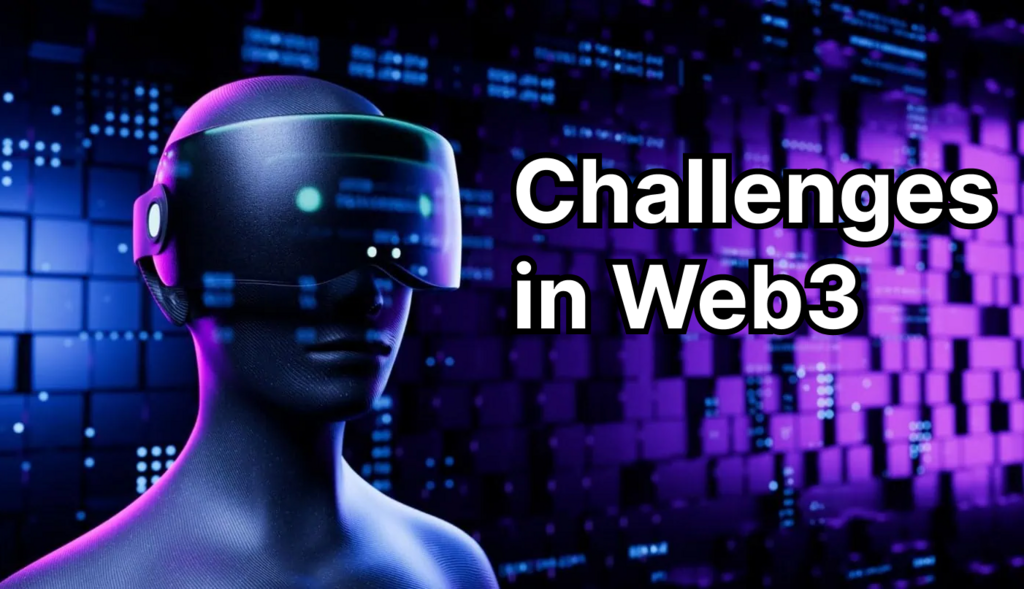
There are 2 main challenges in web3 right now in 2024:
Scalability and Standardization
While there are promising developments, issues related to scalability and lack of standardization still pose significant challenges. These need to be addressed to prevent the fragmentation of the Web3 ecosystem.
Regulatory Uncertainty
Regulatory environments vary significantly across different regions. While some areas, like Abu Dhabi, are becoming hubs for Web3 innovation due to clear regulatory frameworks, other regions, particularly the US, face challenges that drive talent and projects elsewhere).
2024 is a pivotal year for Web3 as it continues to mature and integrate more deeply into various sectors, driven by technological advancements and a clearer regulatory landscape. The focus on user-friendly applications and enterprise solutions indicates a promising future for broader adoption and innovation.
Want to find a web3 job?
| Job Position and Company | Location | Tags | Posted | Apply |
|---|---|---|---|---|
| | United States | Apply | ||
| | New York, United States | Apply | ||
| | Boston, MA, United States | Apply | ||
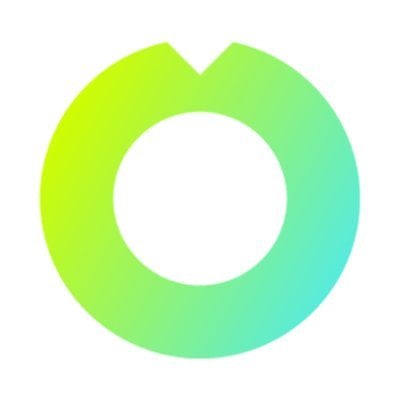 | by Metana | Info | ||
| | Remote | Apply | ||
| | Remote | Apply | ||
| | United States | Apply | ||
| | United States | Apply | ||
| | Remote | Apply | ||
| | Remote | Apply | ||
| | United States | Apply |
